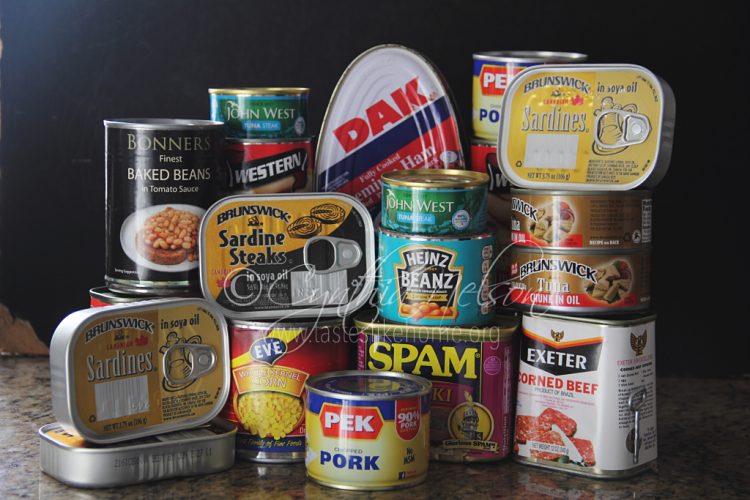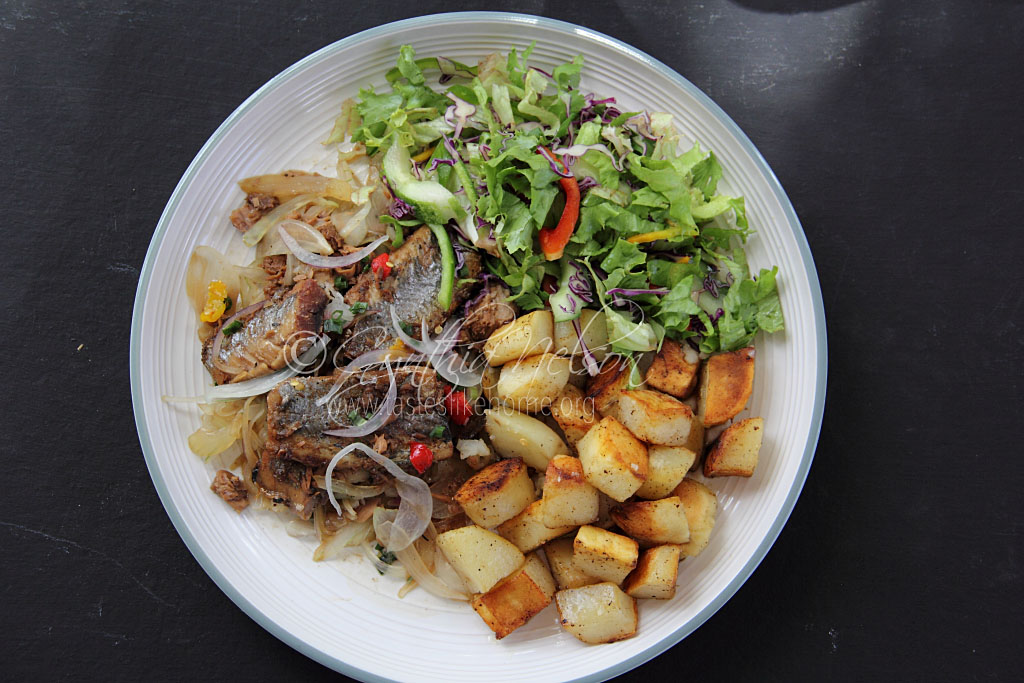 I looked at my shopping cart and checked my list to ensure that I picked up what I needed – 10 cans sardines, 8 cans tuna, 6 cans corned beef, 4 cans baked beans, 4 cans cured pork… You see, it’s hurricane season and I am stocking up and replenishing a few things.
I looked at my shopping cart and checked my list to ensure that I picked up what I needed – 10 cans sardines, 8 cans tuna, 6 cans corned beef, 4 cans baked beans, 4 cans cured pork… You see, it’s hurricane season and I am stocking up and replenishing a few things.
During the time I grew up in Guyana, canned food was a treat. It was never on our grocery list and most of the times when we got any was because my mother, some relative or friend had travelled overseas and brought back a few with them. Whenever it was cooked, we got excited because it was such a rarity. It would be sardines and roti or with bread made into sandwiches. Corned beef was cooked with potatoes sliced thinly along with lots of onions, tomatoes and hot pepper. The only accompaniment needed was hot fluffy white rice. Canned meats like Spam and ham were chopped into bits and cooked with eggs for breakfast or dinner, either with bakes or bread. There was also tuna, mackerel and salmon. Oh my, how can I forget a childhood favourite – Vienna sausages! Such cherished items – canned food.

I remember being aghast on my first trip to Trinidad (I was a young child) and seeing the son of a family friend cook and feed his dog a can of corned beef. How could he do such a thing, my young mind wondered (lol). That’s expensive food Antonio is feeding to his dog. I thought to myself how lucky and special the dog must be, and how rich the family must be to be able to do such a thing.
When I moved to Barbados over 2 decades ago, canned foods quickly became a regular on my grocery list, more for convenience than anything else. My job then as a broadcast television journalist meant long hours. I would leave home early in the morning and return at night when the evening news was completed and sent via satellite link to the region. When I got home all I had the energy to do was open a can of something to make a meal. Years after when I changed jobs and had more time to cook I still continued to stock canned foods and would consume them as a treat on occasion. When hurricane season came around I was one of those (I acknowledge my privilege to be able to do so) who never had to be part of the last-minute mad rush to the supermarket, once a hurricane warning or watch was issued, to buy canned foods.
Hurricane season runs from June 1st to November 30th.
It was only in conversation with a friend last week that I realized how my view had come to change about canned foods. No longer were they considered treats; they were an absolute necessity. Without being conscious of the intent of my actions, like clockwork, 2 months before the start of hurricane season, I start to stockpile a variety of canned foods including beans, corn and fruit. This action and practice is a necessary part of life in a country/region susceptible yearly to weather systems that can wreak havoc, destroying all in its path. It is not just the systems themselves that you brace yourself and prepare for, but the aftermath. It is for times when there might be no electricity for days running into weeks, no potable water, lost vegetation etc.
Like many others I’ve developed a kind system so to speak in the use, stocking and replenishing of canned food. There is a set that is bought that is not used at all during the season because it is there in the event it is needed. At the end of the season, I start to use from that lot and by the time April comes around again (2 months before the hurricane season), I check what is there – quantities and expiration dates – and replenish.
Over the years, I have sought different ways to use canned foods apart from the ways in which I grew up having them. For example, I really like making corned beef rolls that are great at any time with a hot or cold beverage. Beans are added to stews, curries, salads or pureed into spreads/dips. There are many recipes and tips to be found online that offer delicious ways of using canned food. One of my favourites is Sardine Pupu by Hawaiian chef Sheldon Simeon.
Sardines are basted and heated in a flavourful sauce made of the oil drippings in which the sardines sat, thinly sliced garlic, pepper flakes, and soy sauce. The sardines (kept whole) are topped with thinly sliced onions that benefit from a soak in very cold water. This technique removes the bite of the onions and brings out their sweetness, it also makes the onions cool and crisp. It is my favourite part of this sardine dish. Man, eaten with rice, this is a wholesome and satisfying meal. I’ve had it with rice, roti, bakes, ground provisions and breakfast potatoes.
Food always gives us something to think about – its role, function and purpose – and how we consume it.
Cynthia






